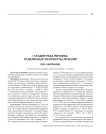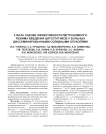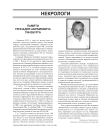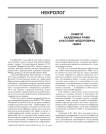Статьи журнала - Сибирский онкологический журнал
Все статьи: 3705
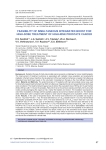
Feasibility of simultaneous integrated boost for high-dose treatment of high-risk prostate cancer
Статья научная
Background. Radiation therapy for high-risk prostate cancer presents a challenge for cancer radiotherapists. The improvement of treatment outcomes is associated with radiation dose escalation and prophylactic irradiation of lymph nodes, therefore, the development of the new treatment schemes is needed. Simultaneous integrated boost technique based on the volumetric modulated arc therapy is the most efficient treatment option. Material and Methods. The anatomical data of 10 patients with high-risk prostate cancer was used for dosimetry-based treatment planning. Both simultaneous integrated boost and sequential boost technique were considered. The treatment planning goal was to deliver the equivalent dose of 96 Gy at 2 Gy per fraction (EQD2=96 Gy) (α/β=1.5 Gy) to the prostate, EQD2=62.5 Gy to the seminal vesicles and EQD2=50 Gy to lymph nodes avoiding damaging the organs at risk, mainly the bladder and rectum. The irradiation was based on volumetric modulated arc therapy with two partially coplanar arcs and two rotations at each arc. The obtained dose distributions were compared with respect to dose-volume histograms and equivalent uniform doses (EUD). Results. In the case of sequential boost, the minimal dose delivered to the prostate was equal to2cc95.9 ± 2.1 Gy, EUD=104.9 ± 1.7 Gy. The dose delivered to 2 cm3 ( D ) bladder was 97.4 ± 2.0 Gy. Normal tissue2cccomplication probability (NTCP) was 1.64 %. The dose delivered to 2 cm3 ( D ) rectum was 103.4 ± 9.2 Gyand NTCP was 27.4 %. In the case of simultaneous integrated boost, the minimal dose delivered to the prostate was equal to 90 . 4 ± 2 . 3 Gy, EUD= 103 . 9 ± 1 . 3 Gy. The bladder dose was as high as D 2cc = 96 . 1 ± 5 . 2 Gy, NTCP= 0 . 176 ± 0 . 132 %, the rectum dose - D 2cc = 81 . 1 ± 6 . 0 Gy, NTCP= 2 . 34 ± 1 . 92 %. Conclusion. Volumetric modulated arc therapy along with simultaneous integrated boost have shown the feasibility of simultaneous irradiation of the prostate, seminal vesicles and lymph nodes up to the prescribed dose values without significant over irradiation of the organs at risk (OARs). Dose values in the tumor as high as EUD= 103 . 9 ± 1 . 3 Gy along with prophylactic irradiation of lymph nodes may result in higher tumor control probability value and should be considered for clinical trials.
Бесплатно
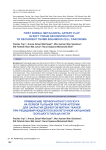
Статья научная
Background. Subungual squamous cell carcinoma (SCC) of thumb is a rare disease. However, it is the most common malignancy affecting the nail bed. Early recognition is crucial and important for prompt diagnosis and effective treatment. Often this tumour needs to be treated surgically with wide local resection, which results in a defect in the thumb. If not handled appropriately, such defects render restriction in functionality of the involved thumb as well as a poor aesthetic outcome. In the worst-case scenario, it may result in a poor function of involved hand. Thus, reconstruction of the involved thumb is necessary. The main aim of reconstruction is to regain the hands’ function and preserved the thumbs’ sensation. Secondarily, to have an aesthetically pleasing hand. Our hands carry out delegate job and important duty for daily function. Especially, the thumb working together with the other fingers to carry out the hand function as one unit. Loss of thumb function affects the whole performance of the hand. Case descriptions. We report a case of recurrent subungual squamous cell carcinoma of thumb, which had wide local resection and subsequently underwent soft tissue coverage with an islanded first dorsal metacarpal artery (FDMA) perforator flap. One month after surgery, the patient was able to regain a good functional outcome of the hand. In this report, we discussed the procedures that had been done. Conclusion. The patient regained full functional hand after reconstruction with preserved sensation over distal thumb. The aesthetic outcome is satisfactory. The FDMA perforator flap is a very pliable and robust flap for reconstruction of distal thumb defect.
Бесплатно
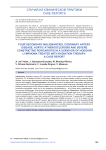
Статья научная
Introduction. Radiation therapy (RT) has been widely used since the 1970s in the treatment of Hodgkin’s lymphoma. RT increases the risk of secondary malignancies and heart disease including coronary artery disease, noncoronary atherosclerotic valvular disease, valvular dysfunction, pericardial disease and radiation induced vasculopathy. Case Presentation. We describe a case of a patient with 4 secondary malignancies due to previous RT including parotid mucoepidermoid carcinoma, breast multicentric infiltrating ducta, thyroid papillary microcarcinoma with follicular pattern and lung adenocarcinoma that later presented with severe constrictive pericarditis, which led to an emergency pericardiectomy - all of these were complications of her previous radiotherapy. She received a prompt diagnosis and treatment. Discussion. Radiation-induced vascular disease (RIVD) occurs due to endothelial injury following RT; patients have up to 3-4 fold increase in risk of myocardial infarction due to CAD, therefore screening of CAD with a CT coronary angiography is recommended to begin 5 years after receiving RT in patients 45 and older and 10 years after RT in patients
Бесплатно
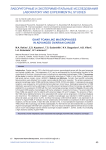
Giant foam-like macrophages in advanced ovarian cancer
Статья научная
Introduction. Ovarian cancer (OC) is the third most common gynecological cancer with the worst prognosis and highest mortality rate. The progression of OC can be accompanied by the detrimental functions of the components of the tumor microenvironment, including tumor-associated macrophages (TAMs). The purpose of the study to analyze distribution and morphological phenotype of TAMs in tumor tissue of patients with high-grade serous ovarian cancer (HGSOC). Material and Methods. Formalin fixed paraffin embedded tissue sections were obtained from ovarian cancer patients after tumor resection. The protein expression of general macrophage marker CD68 and M2-like markers CD206, CD163 and stabilin-1, belonging to scavenger receptors, was analysed by immunohistochemical staining in tumor tissue. Histological assessment of TAM distribution was performed by pathologist. Immunofluorescent analysis/confocal microscopy was applied to establish the co-expression of CD68 with the main macrophage scavenger receptors. Results. We were able to find giant CD68-positive macrophages with foamy cytoplasm in ovarian tumor tissue. The accumulation of these TAMs was specific only for patients with advanced stage (IIIC and IV stages). The presence of foam-like TAMs had a statistical tendency to be associated with ovarian cancer progression, including metastasis and recurrence. The distribution of stabilin-1-positive macrophages was matched to CD68 expression in almost all cases, as was shown by IHC. Confocal microscopy confirmed that stabilin-1 was expressed in at least 50 % of giant TAMs. IF analysis of tumor samples also demonstrated co-expression of other scavenger receptors, CD163 and CD36, in foam-like cells. Similar to IHC, in most samples the expression of CD206 in TAMs of foam-like morphology was limited. Conclusion. For the first time we demonstrated the accumulation of giant macrophages with fluffy foam cytoplasm in the tumor tissue of treated patients with advanced ovarian cancer. Such macrophages express diverse scavenger receptors (stabilin-1, CD163, CD36), thus indicating a high clearance activity of giant TAMs.
Бесплатно
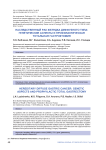
Hereditary diffuse gastric cancer: genetic aspects and prophylactic total gastrectomy
Статья научная
For patients with an identified germline E-cadherin-1 ( CDH1 ) mutation, prophylactic gastrectomy is the treatment of choice to eliminate the high risk of developing diffuse gastric cancer. The case report describes a rare case of hereditary diffuse gastric cancer (HDgC) associated with CDH1 gene mutation, which is reported in the Russian population for the first time. In 2013, a 28-year-old woman was referred to Clinical Oncogenetics Laboratory with a family history of gastric cancer. Molecular genetic analysis revealed CDH1 gene mutation. The lifetime risk of cancer in mutation positive members is more than 80. Histological examination of gastric biopsy specimens obtained during endoscopy revealed isolated signet ring cells in the lamina propria. Spleen-preserving D2-lymphodissection and total gastrectomy with Roux-en-Y reconstruction with a jejunal reservoir formation were performed at the Abdominal Oncology Surgery Department.
Бесплатно
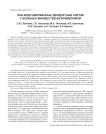
IFN-индуцированные дендритные клетки у больных множественной миеломой
Статья научная
Проведено сравнительное исследование фенотипических и функциональных свойств дендритных клеток (ДК), генери- рованных in vitro в присутствии GM-CSF и IFN-α, у здоровых доноров (n=34) и больных множественной миеломой (n=12). Показано, что по своему составу (количеству зрелых/незрелых ДК и клеток промежуточной степени зрелости) популяция ДК больных в целом была сопоставима с ДК здоровых доноров. ДК больных множественной миеломой (ММ) не отличались от ДК доноров по уровню продукции IFN-γ и TNF-α. В то же время ДК больных характеризовались более низким содержанием активированных CD25+клеток в сочетании с повышенной продукцией IL-10, что, по-видимому, обусловливало ослабление их стимуляторной активности в СКЛ. Тем не менее ДК больных ММ сохраняли свою способность к запуску Th1-ответа, что проявлялось 5-кратным увеличением количества CD3+IFN-γ+ Т-клеток. Полученные данные аргументируют возмож- ность клинического применения ДК у больных ММ в качестве клеточных вакцин (особенно в сочетании с адъювантной цитокинотерапией) с целью повышения эффективности противоопухолевого иммунного ответа.
Бесплатно

Impact of obesity on the oncological and surgical outcomes of thigh soft tissue sarcoma
Статья научная
Background. malignant soft tissue tumors are a heterogeneous group with variable prognosis and with a tendency to recurrence and distant spread, mainly to the lungs. also, obesity is a known risk factor for many diseases and cancers and is currently a global problem. While the thigh is one of the main fat deposition areas, it is one of the commonest sites for the incidence of soft tissue sarcoma. We tried to illustrate the impact of obesity on the outcomes of thigh soft tissue sarcoma patients. material and methods. We retrospectively recruited data of extremity sarcomas treated at our hospital from January 2008 to January 2020. the epidemiological and clinical data of all the included patients was analyzed, then the surgical and oncological outcomes between obese and non-obese patients were compared (defining obesity as Bmi more than 30). We hypothesized that fat deposition in the thigh in obese patients may delay the diagnosis of soft tissue sarcoma, lead to the discovery of the masses at a larger size and stage, and hence may affect the disease-free survival and the overall survival. Results. obese patients had significantly larger size tumors (median: 14.7 vs 9.9 cm) and as such significantly higher t stage. another significant finding was that the mean diameter of liposarcoma tumours was 15.1 cm, while that of non-liposarcomas was 11.3 cm (p-value=0.023). also, although they did not have a higher prevalence of distant metastasis at initial diagnosis, their metastasis tends to be isolated in the lung. postoperative complications occurred more frequently in obese patients in comparison to non-obese patients (p-value=0.025). Neither overall nor disease-free survivals were different among both groups, although obese patients tend to have shorter dFs. conclusion. obesity added complexity to the diagnosis and treatment of extremity sarcoma, but seems not to affect survival.
Бесплатно
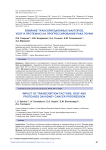
Impact of transcription factors, VEGF and proteases on kidney cancer progression
Статья научная
Introduction. The efficacy of anticancer treatment depends on biological factors of tumor. the aim of the study was to determine the activity of proteasomes and calpains and to reveal their association with VEgF, HIF-1α and NF-κΒ expressions in normal, primary and metastatic renal cell carcinoma (RCC) tissues. methods. Ninety-three patients with renal cell carcinoma were included into the study. The expression levels of transcription factor and VEgF were measured using ELISA kits. The levels of proteasome subunits were measured by Western blotting. Proteasome and calpain activities were determined using specific fluorogenic substrates. results. We revealed inactivation of proteolysis in patients with kidney cancer. Disease advance was associated with a significant depression of cellular proteolysis and increase in transcription and growth factor levels in primary kidney cancer tissues. The proteolysis activation was found in metastatic tissues. Conclusions. Our results suggest that NF-κΒ, HIF-1α and VEgF transcription factors and intracellular proteolytic systems are involved in kidney cancer progression.
Бесплатно
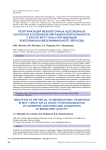
Статья научная
Using DIC and confocal microscopy, changes in morphology, migratory characteristics and adherence junctions (AJs) were analyzed in the mammary carcinoma cell line MCF-7-SNAI1 after activation of the EMT transcription factor SNAI1. Western blot analysis showed that after removal of tetracycline from the cell culture medium expression of SNAI1 reached its peak in 24 hours and then plateaued for 7 days. During the 7 days the cells continued to express E-cadherin; however, tangentialAJs typical for cells with stable cell-cell adhesion, changed into radial AJs. The radial AJs continued to accumulate E-cadherin during 24-72 hours after tetracycline removal. As a result of SNAI1 activation, the cells underwent epithelial-mesenchymal transition (EMT) and became migratory. On a two-dimensional substrate, cells exhibited both individual and collective migration. As the tetracycline washout period progressed, the fraction of the cells capable of migrating through migration chamber membranes increased; on the contrary, cells’ ability to invade an epithelial monolayer decreased. These results demonstrate that retaining a hybrid epithelial/mesenchymal phenotype and accumulation of E-cadherin in AJs during early stages of EMT do not impede disruption of stable cell-cell adhesion and cells’ acquisition of migratory activity.
Бесплатно
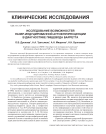
Статья научная
In vivo autofluorescence of normal and metaplastic epithelium of esophagogastric transition in patients with reflux-esophagitis was studied by local fluorescence spectroscopy under 532 nm excitation. It was shown that application of in vivo local fluorescence spectroscopy during gastroesophagoscopy makes it possible to improve a quality of diagnostics of Barrett's esophagus. Key words: gastroesophageal reflux disease, Barrett's esophagus, fluorescent diagnosis, local fluorescent spectroscopy.
Бесплатно
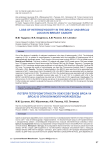
Loss of heterozygosity in the BRCA1 and BRCA2 locus in breast cancer
Статья научная
One of the factors of variability of malignant neoplasms is the loss of heterozygosity (LOH). The biological meaning of LOH, in relation to carcinogenesis, is associated with the inactivation of heterozygous loci of pathogenetically significant genes. Thus, the aim of this work was to study BRCA1/2 LOH in breast tumors. Material and Methods. The study included 122 patients with stage IIAIIIC breast cancer. DNA was isolated from 122 biopsy samples of tumor tissue using the QIAamp DNA mini Kit (Qiagen, Germany). To assess the status of LOH, microarray analysis was performed on high-density DNA chips from Affymetrix CytoScanTM HD Array. To process the results of microchipping, we used the Chromosome Analysis Suite 3.3 program (Affymetrix, USA). Results. The loss of heterozygosity in the BRCA1 gene was found to be associated with response to NAC. It was shown that in 59 patients LOH in the BRCA1gene was associated with an objective response to treatment (p=0.005). The presence of LOH in the studied genes was associated with a favorable prognosis. The 5-year non-metastatic survival rates were 75 % and 100 % in patients with LOH in the BRCA1 and BRCA2 genes, respectively (log-rank test: p=0.003 and p=0.05, respectively). Conclusion. The phenomenon of LOH in the BRCA1/2 genes was shown to be associated with response to NACT. BRCA1/2. Further studies are needed to evaluate the frequency of BRCA1/2 LOH after NAC for choosing and changing treatment tactics.
Бесплатно
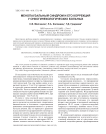
Menopausal syndrome and its correction for oncogynecological patients
Статья научная
The review presents the problem of climacteric syndrome in reproductive-aged oncogynecological patients after antitumor treatment. A subject about correction of climacteric syndrome using substitutive hormonotherapy and non-hormonal methods (phytotherapy, phytohormones, homeopathy, vitamintherapy, behavior therapy and physical factors) was opened.
Бесплатно
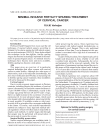
Minimal invasive fertility sparing treatment of cervical cancer
Статья научная
This paper gives an overview of in particular surgical techniques that allow young women with cervical cancer to retain fertility.
Бесплатно
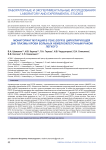
Статья научная
Activating mutations of egfr are associated with sensitivity of non-small cell lung cancer (NSCLC) to tyrosine kinase inhibitors (TKI). Liquid biopsy using circulating cell-free tumor DNA (cfDNA) is proposed in cases when formalin fixed paraffin embedded (FFPE) tumor tissue is not available and for monitoring of egfr status. In the study we evaluated new qPCR assay for egfr mutations in plasma cfDNA. Sensitivity of the assay was 1 % of the mutant allele for L858R, L861Q, S768I mutations and deletions in exon 19, and 5 % of the mutant allele for G719X or T790M mutations Before surgery, mutation was detected in plasma of 4 out of 7 patients (57 %) with mutant egfr in FFPE tumor tissue. Mutations found in cfDNA completely matched those found in tumor tissue in 2 cases. In one case with G719X and S768I mutations in FFPE tissue, only S768I was found in cfDNA. In another case, T790M was detected in plasma in addition to L858R that was present in tumor tissue. No egfr mutations were detected in plasma DNA from 12 healthy volunteers and 13 cases of NSCLC with wt egfr suggesting 100 % specificity of the assay. Liquid biopsy detected egfr mutations in cfDNA in 8 of 16 cases of NSCLC with mutant egfr being under therapy with TKI. Among them, 7 cases had mutations in liquid biopsy that matched those in tumor tissue and another case had T790M in addition to L858R. In 3 cases increased mutant allele frequency was detected 212 months before clinical progression.
Бесплатно
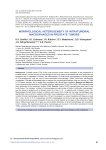
Morphological heterogeneity of intratumoral macrophages in prostate tumors
Статья научная
Background. Prostate cancer (PCa) is the most common human cancer worldwide. in the progression of prostate cancer, the total number of macrophages in the tumor tissue is associated with poor prognosis and increased risk of metastasis. However, the heterogeneity of intratumoral macrophages at various stages of PCa development, and the role of tumor-associated macrophages (TAMs) have been insufficiently investigated. The aim of the study was to analyze the morphological features, size and number of TAMs in PCa tissue samples, and to reveal their correlation with clinical data of patients. Material and Methods. immunohistochemical analysis of 36 paraffin blocks of patients with PCa (pT2a-3bN0-1M0) was performed using antibodies to the scavenger receptor CD68. Results. Foamy CD68+ macrophages were found in the tumor tissue. The indicator "number of macrophages per total number of fields of view with macrophages" was the lowest in patients with a Gleason score of 6 (5.8) (11.0 - in patients with a Gleason score > 8). Macrophages formed larger clusters in patients with severe PCa. Small but not large macrophages were significantly more common in patients with lymph node metastases (48 vs 24 in the N0 group; p=0.14). The number of small macrophages (smaller than 100 pm2) increased in a series of patients with Gleason scores of 6, 7 and > 8 (24, 47.5, 72, respectively, p=0.052). Conclusion. As the tumor process progressed and the risk of biochemical recurrence increased, there was a trend towards an increase in the total area of large, foamy TAMs, presumably rich in lipids, as well as wider distribution of small macrophages with a tendency to form clusters. We hypothesize that foamy macrophages are involved in the further recruitment of small TAMs, subsequently leading to metastasis and tumor progression.
Бесплатно


